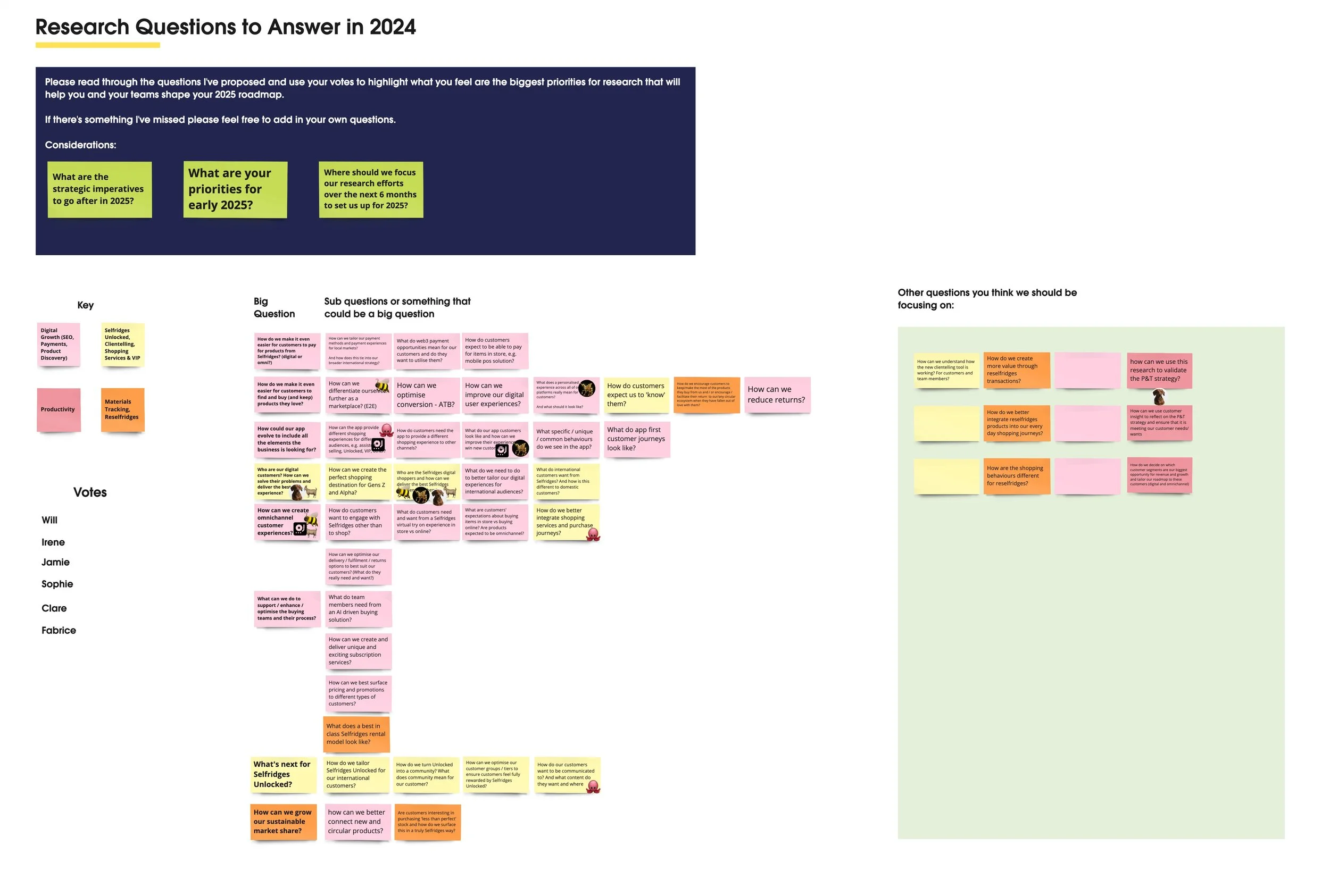Creating a Strategic Research Roadmap
Moving UX Research into the Product Team to shift the focus on identifying key opportunities that directly informed product roadmaps and business decisions.
Stakeholders: Product, Technology, UX
Tools: Miro, Content Square
Methods: Data Analysis, Stakeholder Interviews, Workshops
January 2024
Background
We had often done a combination of discovery and validation research for the Product team - always for projects that were in flight. The business wanted to move to a place where we were using customer research to inform and prioritise which projects we should be working on.
As a result my team moved our of the UX team to sit centrally within the Product Strategy team. I worked with the UX Design and Product teams to enable and empower them to continue conducting the types of research my team had previously supported with. With so many possibilities of projects for us to work on, we needed a focus, and our own research roadmap.
Research Methods and Process
Research Goal
To create a high-level plan that outlines key research objectives, timelines and objectives for the forthcoming year.
Process
The senior product and technology leadership published their 5 year plan for the team. Much of it was based on competitor analysis, industry and business knowledge.
The first step was to review this, along with the new company business documents. I conducted stakeholder interviews with the Heads of Product and Technology and Director of Product.
This data, combined with insights we had from previous projects and our own competitor analysis, I created a set of ‘big research questions’ - many straddling multiple product areas.
Examples included:
How do we make it even easier for customers to pay for products from Selfridges (digital and in store)?
How can the app provide different shopping experiences for our different audiences?
How can we create and deliver unique and exiting subscription services?
I had 42 big research questions!
I ran a workshop with the senior product and technology team members where I presented the process so far. I asked them to spend a few minutes reading the questions and then gave them 3 votes each to vote on their preferred research questions based on:
What they believed the strategic imperatives are to go after in 2025
Their priorities for 2025
Where they thought we should focus our research efforts over the next 6 months to set us up for success in 2025
They were also given an opportunity to add in their own additional research requests.
The workshop sparked lively debate. Several common themes emerged through the discussion in addition to the clear direction indicated by the voting.
These are the projects which went on to the roadmap. I created key research objectives, methods, timelines and deliverables for projects in Q2 and the team set about working on them.
Impact
In the 6 months we had the roadmap it gave the team direction and focus. (I left the business after this time.)
We were still in transition during this time, so were still working on upskilling other members of the team and wrapping up old projects. However, the roadmap provided clarity on our workload and what was coming up. It also included all our Research Ops efforts so any viewer could understand where we were at.
Learnings
I would have conducted stakeholder interviews with senior leaders outside of Product and UX to get insight into their priorities and challenges earlier in my process. Whilst I did involve them and the feedback was largely positive, there were some who felt decisions had been made without their team’s priorities being taken into account. Involving these stakeholders earlier in the process would have further helped create alignment, foster collaboration and further promote the role that UX research and product discovery can play in ensuring we are building the right thing for the customer.
Most of the teams we work closely (analytics, product, UX and marketing) with were pleased to have access to a plan of our workload. It created welcome visibility and opportunities for early collaboration.
